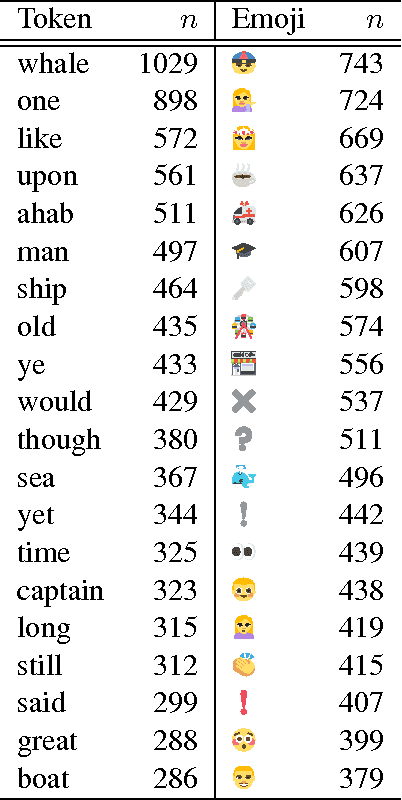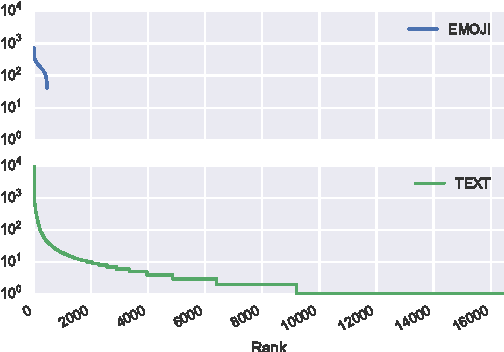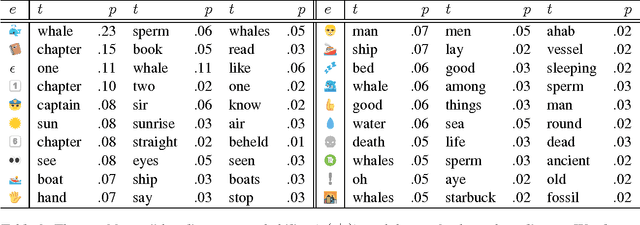:telephone::person::sailboat::whale::okhand:; or "Call me Ishmael" - How do you translate emoji?
Paper and Code
Nov 07, 2016



We report on an exploratory analysis of Emoji Dick, a project that leverages crowdsourcing to translate Melville's Moby Dick into emoji. This distinctive use of emoji removes textual context, and leads to a varying translation quality. In this paper, we use statistical word alignment and part-of-speech tagging to explore how people use emoji. Despite these simple methods, we observed differences in token and part-of-speech distributions. Experiments also suggest that semantics are preserved in the translation, and repetition is more common in emoji.
 Add to Chrome
Add to Chrome Add to Firefox
Add to Firefox Add to Edge
Add to Edge